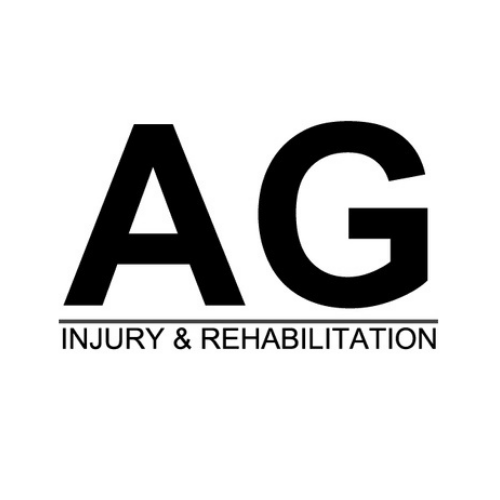Shin splints are an annoyingly common injury especially in people who have either just started running or have recently upped their mileage. They can be caused by a number of factors and can lead on to more serious issues like stress fractures, but luckily they can go as quickly as they came with the right management.
In this article I'll go through what shin splints are, the most common causes and how to get rid of them quickly so you can get back to training.
What are shin splints?
Shin splints, medically known as medial tibial stress syndrome, are a common complaint among runners and athletes alike. Characterized by pain along the inner edge of the shinbone (tibia), shin splints typically occur during or after exercise, particularly activities that involve running or jumping. This discomfort arises from inflammation of the muscles, tendons, and bone tissue surrounding the tibia, often resulting from repetitive stress or overuse. Understanding the underlying causes and implementing targeted strategies is key to alleviating shin splint symptoms and getting back on track with your running routine.
Now we'll discuss the four most common causes of shin splints, before looking at how we can treat them.
Common Causes of Shin Splints
Overuse or Overtraining
Shin splints often occur when individuals push themselves too hard or increase their training intensity too quickly. Overuse of the lower leg muscles, without adequate rest and recovery time, can lead to microtears in the muscle fibers and inflammation of the surrounding tissues. This is particularly common in runners who rapidly increase their mileage or intensity, such as increasing the duration or frequency of their runs without allowing their bodies to adapt gradually. Additionally, sudden changes in training surface, such as transitioning from soft trails to hard pavement, can also contribute to overuse injuries like shin splints. It's important to listen to your body and incorporate rest days into your training regimen to allow for proper recovery and reduce the risk of developing shin splints. Gradually increasing the intensity and duration of your workouts, as well as incorporating cross-training and strength training exercises, can also help prevent overuse injuries and promote overall fitness and performance.
Incorrect Footwear
Wearing shoes that are ill-fitting, lack proper support, or have worn-out cushioning can significantly contribute to the development of shin splints. Shoes that do not provide adequate shock absorption can increase the impact forces transmitted to the lower legs during physical activity, leading to excessive stress on the muscles and bones of the shin area. Additionally, shoes that are too tight or too loose can alter biomechanics and increase the risk of developing shin splints.
It's essential to choose footwear specifically designed for your activity and foot type. Running shoes, for example, come in various designs to accommodate different foot shapes and pronation patterns. Getting properly fitted for shoes at a specialty running store can help ensure you select the right pair for your needs. Additionally, regularly replacing worn-out shoes is crucial, as the cushioning and support materials degrade over time, diminishing their ability to absorb impact effectively.
Moreover, individuals with specific biomechanical issues, such as overpronation or supination, may benefit from shoes with appropriate stability or motion control features to help correct their gait mechanics and reduce the strain on the lower legs. Custom orthotics or insoles prescribed by a podiatrist or physical therapist may also be recommended for those with more severe foot alignment issues. By investing in quality footwear that offers proper support and cushioning, you can help prevent shin splints and other lower limb injuries, allowing you to enjoy your physical activities with reduced risk of discomfort or injury.
I listed my recommended running trainers for marathon training in a post last week.
Biomechanics Factors
Biomechanical abnormalities in the feet, ankles, or legs can contribute to the development of shin splints. One common issue is overpronation, where the foot rolls excessively inward during walking or running, placing increased stress on the inner shin area. Conversely, individuals with high arches or supination may experience shin splints due to inadequate shock absorption and poor distribution of forces along the lower leg.
These biomechanical imbalances can lead to inefficient movement patterns, causing certain muscles to work harder to compensate for the instability, which can result in overuse injuries like shin splints. Moreover, tightness or weakness in specific muscle groups, such as the calf muscles or anterior tibialis (the muscle in the front of the shin), can further exacerbate biomechanical issues and increase the risk of developing shin splints.
Addressing biomechanical factors often involves a multifaceted approach, including corrective exercises, stretching, and footwear modifications. Strengthening exercises targeting the muscles of the lower legs and feet, such as calf raises, toe taps, and ankle dorsiflexion exercises, can help improve stability and support proper foot mechanics. Stretching tight muscles, particularly the calves and Achilles tendon, can also help alleviate tension and reduce strain on the shin area.
In some cases, orthotic inserts or custom-made orthotics prescribed by a podiatrist or physical therapist may be recommended to provide additional support and alignment correction. Furthermore, working with a qualified healthcare professional, such as a physical therapist or sports medicine specialist, can help identify and address biomechanical issues specific to your individual anatomy and movement patterns, reducing the likelihood of shin splints and improving overall performance and comfort during physical activity.
Training Surface
The surface on which you perform your physical activities can significantly impact the development of shin splints. Running or exercising on hard surfaces such as concrete or asphalt subjects the lower limbs to greater impact forces with each footstrike, increasing the risk of shin splints and other overuse injuries. The unforgiving nature of these surfaces provides minimal shock absorption, leading to heightened stress on the muscles and bones of the lower legs.
Similarly, uneven terrain, such as trails with rocks, roots, or varying inclines, can further challenge the stability and alignment of the lower limbs, increasing the likelihood of developing shin splints. The irregularities of the surface require constant adjustments in stride and foot placement, placing additional strain on the muscles and connective tissues surrounding the shinbone.
To minimize the risk of shin splints related to training surface, consider incorporating variety into your workouts. Alternating between different surfaces, such as grass, trails, and tracks, can help distribute the impact forces more evenly and reduce repetitive stress on specific muscle groups. Additionally, if you primarily run on hard surfaces, investing in well-cushioned running shoes or using shock-absorbing insoles can help mitigate the impact on your lower limbs.
When running on trails or uneven terrain, pay close attention to your footing and adjust your pace accordingly to navigate obstacles safely. Strengthening exercises targeting the muscles of the lower legs and core can also improve stability and proprioception, enhancing your ability to adapt to varying surfaces and reducing the risk of injury.
Ultimately, being mindful of your training surface and incorporating appropriate precautions and adjustments into your routine can help minimize the risk of shin splints and promote a safe and enjoyable running experience.
So now you know what shin splints are and what are the common causes, hopefully it's all starting to make sense and you might have an idea why you are suffering with shin pain.
Now we'll discuss how to fix shin splints so you can get back running again!
How to Treat Shin Splints?
Effective treatment of shin splints involves a comprehensive approach aimed at reducing pain and inflammation, addressing contributing factors, and promoting healing and recovery. Initially, it's crucial to rest and avoid activities that exacerbate symptoms to allow the injured tissues to heal. Ice therapy can help alleviate pain and inflammation by constricting blood vessels and reducing swelling. Applying ice packs to the affected area for 15-20 minutes several times a day can provide relief. Additionally, nonsteroidal anti-inflammatory drugs (NSAIDs) such as ibuprofen or naproxen may be used to manage pain and reduce inflammation, but they should be used cautiously and under the guidance of a healthcare professional.
Once acute symptoms subside, gradually reintroducing low-impact activities, such as walking or swimming, can help maintain cardiovascular fitness while minimizing stress on the shins. It's essential to address biomechanical factors that may have contributed to the development of shin splints. This may involve wearing supportive footwear or orthotic inserts to correct foot mechanics and reduce strain on the lower limbs. Physical therapy can be instrumental in addressing muscle imbalances, improving flexibility, and implementing strengthening exercises to enhance stability and prevent future injuries.
Incorporating cross-training activities, such as cycling or elliptical training, can help maintain fitness levels while reducing the repetitive stress on the shins. Additionally, focusing on proper warm-up and cool-down routines, including dynamic stretching and foam rolling, can help prepare the muscles for activity and promote recovery afterward. Gradually increasing the intensity and duration of exercise, and incorporating rest days into your routine, is essential to prevent overuse injuries and allow for adequate recovery.
In cases where conservative measures fail to alleviate symptoms, or if there are underlying structural issues contributing to shin splints, further evaluation by a healthcare professional may be necessary. This may include imaging studies, such as X-rays or MRI scans, to assess the extent of tissue damage and rule out more serious conditions such as stress fractures. In some cases, corticosteroid injections or other advanced treatments may be considered to address persistent pain and inflammation.
Overall, a combination of rest, rehabilitation, and preventive measures is key to effectively treating shin splints and returning to pain-free physical activity. By addressing contributing factors and implementing targeted interventions, individuals can recover from shin splints and resume their running or athletic pursuits with confidence and reduced risk of recurrence.

